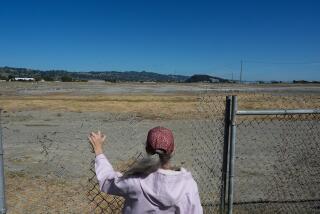Follow Through on Rocketdyne
Neighbors of Rocketdyne’s Santa Susana Field Laboratory got no comfort last year from a UCLA study that found that some lab employees have higher-than-expected cancer death rates.
The findings deepened long-nagging concerns over possible health effects resulting from decades of nuclear and rocket engine testing at the facility, perched on a windy peak between the Simi and San Fernando valleys.
Results of a second study of employees--this time looking for effects from exposure to chemicals--are expected in September.
Although the two UCLA studies examined health effects among workers, little research has been done into possible effects on residents of the surrounding communities of Simi Valley, Box and Bell canyons, the Santa Susana Knolls, Chatsworth and West Hills, where some neighbors blame bladder cancers, leukemia and birth defects on pollution from the Rocketdyne lab.
Chances of such a public health study happening any time soon were diminished late last month when federal Department of Energy officials confirmed that its funding of Rocketdyne health studies will end Sept. 30.
Because a survey of surrounding communities would focus on the public rather than on company employees, the Department of Energy is passing responsibility to the federal Health and Human Services Department, specifically the Centers for Disease Control and Prevention.
Established in 1947 and now owned by parent company Boeing North American, the open-air field lab is undergoing a $55-million cleanup of toxic waste. Thus far, no official study has linked health problems outside the lab’s 2,668-acre site to activities inside. The company consistently has maintained that its activities have not affected surrounding communities.
The facility has spawned a handful of lawsuits from neighbors contending that their health or property was damaged by pollution from the lab. Such suits seek to prove that connection, but investigators’ findings in support of the litigation--like the company’s rebuttals--lack the independence that gives credibility to the two UCLA studies.
Because the lingering uncertainty is the legacy of an era when the mission was winning the Cold War and the lab’s primary customer was the U.S. government, it seems only fair for the government to follow through and clear the last clouds from this secretive chapter in history.
The Centers for Disease Control should use their resources and expertise to finally and officially establish the truth, one way or the other.






